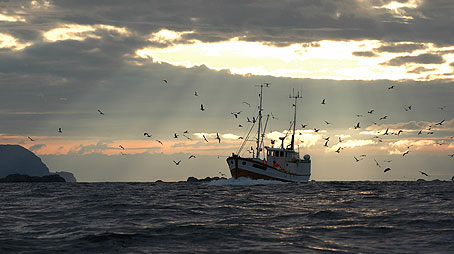

IGBP 1987-2011
Facts
- Phase 1: 1987-2003
- Phase 2: 2004-2013
- Synthsis: Global Change and the Earth System (2004)
Since 1987, IGBP has been a world-class provider of scientific expertise, coordination and communication. IGBP's Secretariat is based in Stockholm, Sweden (established in 1989). We have international project offices in North America, Europe and Australia and a regional office in Sao Paulo, Brazil
Phase 1
The International Council for Science (ICSU) formed IGBP in 1987, almost a decade after the start of the World Climate Research Programme.
Between 1987 and 1990 about 500 scientists worldwide helped develop the programme.
Implementation began in the early 90s with the official launch of five projects:
- Biospheric Aspects of the Hydrological Cycle (BAHC)
- Global Change and Terrestrial Ecosystems (GCTE)
- International Global Atmospheric Chemistry (IGAC)
- Past Global Changes PAGES)
These were soon followed by five more projects.
- Land-Ocean Interactions in the Coastal Zone (LOICZ)
- Land-Use and Land-Cover Change (LUCC)
- Global Analysis, Integration and Modelling (GAIM)
- Data and Information Services (DIS)
- Global change SysTem for Analysis, Research and Training (START)
The Anthropocene
In 2000, IGBP's Vice Chair, Nobel-laureate Paul Crutzen, published an article in IGBP's Global Change magazine suggesting that Earth had entered a new geological epoch, the Anthropocene.
The Amsterdam Declaration on Earth System Science
The first phase closed with a major international Earth System conference in Amsterdam in 2001, which led to the Amsterdam Declaration on Earth System Science.
Global Change and the Earth System
In 2004, IGBP published its first synthesis, Global Change and the Earth System (Steffen et al). This synthesis continues to be one of IGBP's most highly-cited products. The synthesis outlined the "Great Acceleration" in human activity since 1950, the notion that we have now entered a new geological epoch, the Anthropocene and the concept that Earth is now in a "no analogue" state.
Phase 2
The synthesis, Global Change and the Earth System, settled the foundations for IGBP's second phase ( 2004-2013).
IGBP focussed on a new set of overarching scientific questions organised around a new scientific structure. The new structure is based on a suite of both new and refocused projects that reflect the three major Earth System components - land, ocean and atmosphere -, the interfaces between these components and system-level integration through time and space.